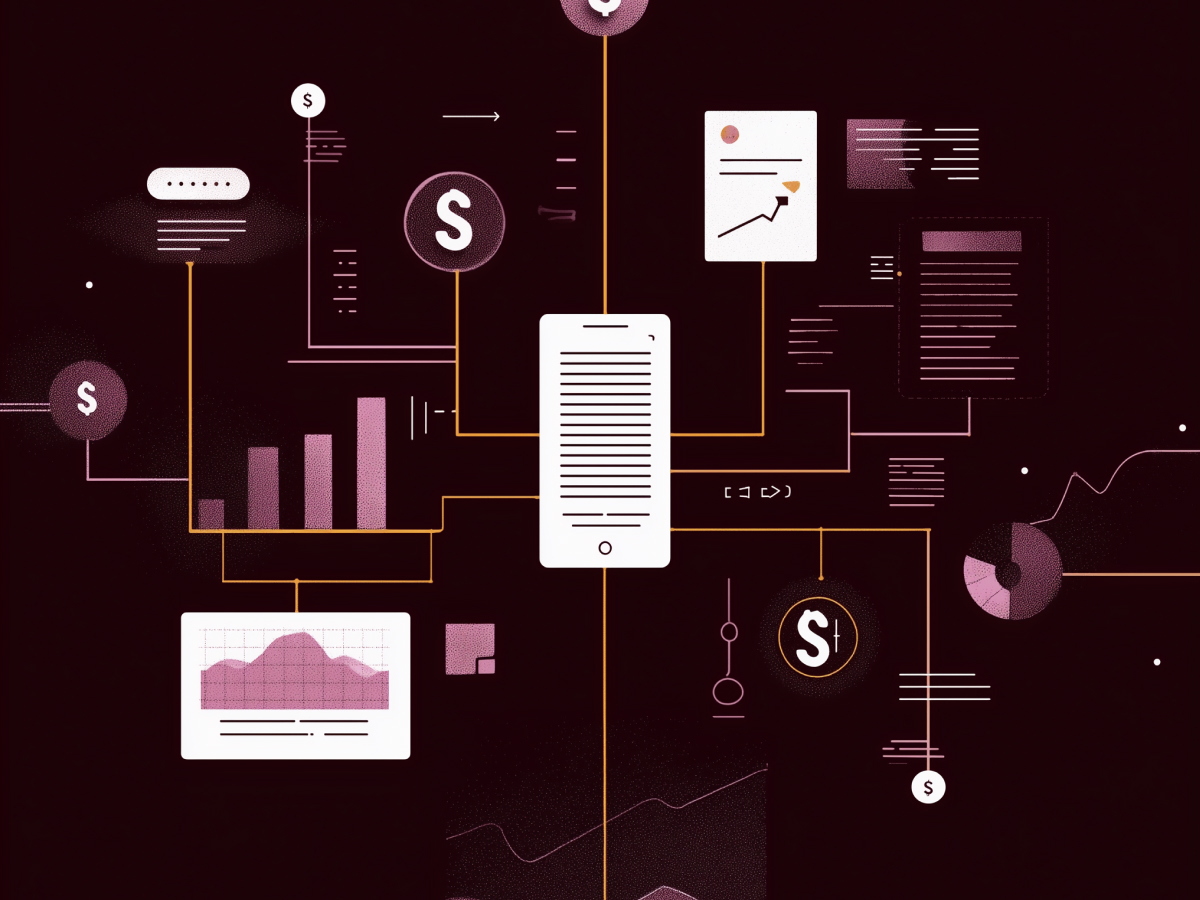Agentic AI transforms customer experience
The way companies handle customer experience is changing fast. Reactive support, the kind that waits for a problem, just doesn’t cut it anymore. Agentic AI is stepping in to turn that around. It doesn’t wait. It learns what to do and acts, autonomously. It operates with a purpose, making decisions, planning next steps, and adjusting to new information, all without human input. That’s the real shift.
This isn’t the same as rules-based automation. Agentic AI leverages machine learning, natural language processing, and real-time analytics to make independent decisions based on incoming data. Instead of just responding to queries, it recognizes patterns, predicts needs, and steps in before issues get serious. It adapts on the fly and scales improvement without slowing down operations.
This isn’t just automation, it’s intelligent infrastructure. Across sectors like healthcare, retail, telecom, and finance, agentic systems are replacing guesswork with clear, proactive responses. Instead of more people solving more issues, fewer issues arise in the first place.
Business leaders who want to build resilience and scale intelligently should look closely at this shift. Agentic AI doesn’t just respond better, it eliminates the need to respond in the first place. That’s foundational.
Personalized customer interactions improve satisfaction and loyalty
Customers expect more than fixed menus and scripted replies. Agentic AI enables real-time personalization that goes beyond simple segmentation. It learns from past behavior, context, and preferences and responds accordingly, at scale.
Large language models (LLMs) allow AI agents to understand natural customer language while adjusting recommendations instantly. This level of contextual awareness transforms generic service into a tailored interaction. CRM systems integrate with these models, feeding real-time data into AI processes that adapt with each conversation.
When it’s done right, it feels natural. Customers are understood, not sold to. The experience becomes intuitive. That creates loyalty, and loyalty drives revenue.
Salesforce’s Agentforce and Adobe’s Experience Platform are doing this well. They help translate behavioral data into action, delivering exactly what the customer wants, without them needing to ask. Zendesk also uses AI-powered ticketing to anticipate needs, not just solve existing problems.
Executives should note: personalizing at scale used to be costly and slow. That’s no longer true. Done right, agentic AI doesn’t complicate, it simplifies. It removes friction, increases satisfaction, and makes your CX system feel human, even at massive scale.
Proactive support builds trust and reduces frustration
Most companies still operate in reactive mode when it comes to customer service. But customers don’t want to explain a problem, they want it fixed before it impacts them. Agentic AI enables that. It uses predictive analytics, real-world signals, and integrated data to monitor, detect, and address problems before the customer even knows they exist.
This is a leap, not a tweak. Agentic AI doesn’t just automate responses, it forecasts triggers and deploys fixes instantly. When integrated with operational systems, it can manage disruptions like network issues, late shipments, or product failures at scale. Customers get a resolution, often without needing to reach out. That experience builds trust and retention.
Enterprise platforms like Zoom’s Virtual Agent, Genesys’s Cloud CX, and ServiceNow’s AI-powered tools are doing this well today. They respond before the user logs a complaint, and that’s the point. Proactive service minimizes contact volume and optimizes customer satisfaction in a way reactive systems simply can’t.
For executives, this isn’t just performance optimization, it’s brand protection. Every time a customer is saved from a delay, disappointment, or failure, company reputation improves. Reactive support fixes problems. Proactive support prevents them. That creates long-term efficiency and customer loyalty without adding headcount.
Consistent omnichannel support enhances accessibility and streamlines customer journeys
Customers switch channels, web, mobile apps, social media, chat, voice, without thinking twice. Too many companies handle each one separately, and that’s the problem. Agentic AI gets rid of the fragmentation. It uses intelligent context-sharing to create a single, continuous customer experience across all touchpoints.
With real-time data, natural language processing, and API integrations, agentic AI keeps memory of the entire customer journey. That means no repetition, no confusion, and no friction, whether the customer engages via chat, email, or voice call. The customer’s intent, preferences, and history stay with them and guide each interaction to resolution.
Companies like Sprinklr, NICE with CXone, and Microsoft’s Dynamics 365 have built strong omnichannel frameworks using agentic AI. Each interaction is aligned, even if it started elsewhere. The result: faster resolution, improved agent performance, and simplified operations.
To business leaders, the value is clear: this cross-channel alignment isn’t about channels anymore, it’s about continuity. When the experience moves fluidly, customers stay engaged. And when the data flows cleanly across systems, so do insights. That supports better decisions, and better margins.
Autonomous task execution frees human resources for strategic roles
Customer operations are full of repetitive processes, bookings, returns, claim submissions, onboarding steps. Most of this doesn’t require human intelligence. Agentic AI identifies these tasks, breaks them into logical steps, and executes them independently. It doesn’t wait for approvals or instructions. It acts, with precision, speed, and minimal oversight.
The upside is significant. AI agents can manage multiple workflows at once without fatigue or decline in quality. That means fewer delays for customers and more bandwidth for your human teams to focus on higher-value work, relationship building, innovation, escalations that require nuanced human judgment.
Companies like UiPath, IBM (through Watson Orchestrate), and Automation Anywhere are building these systems at enterprise scale. They’ve designed agentic solutions with decision engines, built-in guardrails, and continuous learning loops that improve performance over time. Adoption doesn’t have to be all at once. Start with pilot projects, refine, then scale.
For executives, this is operational leverage. You’re not adding more staff to match volume. You’re redesigning how the work gets done. Intelligent automation speeds up throughput, reduces error rates, and lowers costs, with better compliance and consistency. That’s a scalable model you can run globally.
Emotionally intelligent AI enhances empathy in customer interactions
Tone, intent, emotional state, these drive how customers perceive every interaction. Agentic AI can now understand those signals. By using sentiment analysis and emotion detection, AI agents identify if someone’s frustrated, satisfied, or at risk of churning. And it adjusts communication in real time to match the mood.
This isn’t scripted sympathy. It’s algorithmic awareness that helps AI decide whether a situation needs escalation, softer language, or a faster resolution path. It sees patterns in word choice, pacing, and language structure across vast data sets, and uses that insight actively within the exchange.
Solutions from Zoom (AI Companion), Pega Systems (Customer Decision Hub), and Affectiva lead in this field. They bring emotional intelligence into high-volume environments like contact centers without adding complexity. For global teams speaking multiple languages across multiple cultures, that level of awareness is critical.
For leaders, the takeaway is direct: digital interactions are no longer cold by default. You can deliver empathy at scale. You can reduce churn caused by perceived indifference. And you can design systems that understand how the customer feels, not just what they say. That improves relationships and retention without increasing costs.
Real-Time workflow optimization increases efficiency and responsiveness
When workflows are static, they lag behind demand. Agentic AI fixes this by introducing real-time adaptability. It doesn’t just follow predefined processes, it continuously adjusts them based on current data. Whether the input is customer request patterns, inventory levels, or support volume, the system responds instantly with optimized actions.
This is what makes it efficient. AI monitors the end-to-end flow of operations, identifies where bottlenecks are forming, and re-routes or reprioritizes without needing human intervention. For customer-facing teams, that means reduced wait times, smarter routing, and fewer handoffs. Customers notice the speed. Operations notice the impact on cost per interaction.
Tech platforms backing this shift include Confluent (streaming event data), SAP with HANA (real-time analytics), and Oracle Fusion Cloud (process automation). They’re integrating AI-driven decision-making directly into the workflows, no external dashboards, no manual reconfigurations.
For executives, this isn’t just about tuning performance. It’s about building systems that self-adjust to market and customer conditions. It keeps operations fast under pressure and helps scale without chaos. That creates resilience, without having to overbuild infrastructure.
AI-powered self-service options expand access and reduce service costs
Customers prefer to resolve simple issues on their own, if the tools are smart and fast. Agentic AI makes that possible. It powers chatbots and virtual assistants that don’t rely on scripted answers. Instead, they understand context, adapt in real time, and respond naturally, even during complex inquiries.
This cuts down call volumes, reduces ticket backlogs, and gives customers 24/7 resolution without waiting. Large language models help these agents understand nuances in human communication, tone, intent, and phrasing, so they don’t ask customers to rephrase or restate. The result is faster answers and less frustration.
Companies leading in this space are Google with Dialogflow, Amazon with Lex, and Intercom’s AI-driven support platform. They use feedback loops to make the bots smarter over time. Customer interactions teach the system what’s working and what isn’t, automatically.
For C-suite leaders, the case is clear: AI-based self-service reduces operational overhead while improving the customer experience. It’s scalable, multilingual, and constantly learning. It offloads demand from your frontline teams and opens up new models for service delivery without sacrificing quality.
Predictive analytics enable upselling and improved cross-selling
Customer data is only useful if it leads to action. Agentic AI makes that possible by analyzing behavioral trends, purchase patterns, and context in real time. This allows systems to surface relevant product or service recommendations precisely when a customer is ready to decide, without being intrusive.
This kind of AI isn’t guessing. It identifies signals that indicate buying intent or churn risk. Then it delivers upsell or cross-sell options tailored to individual needs. That increases relevance, improves conversion rates, and keeps the interaction seamless. It also eliminates wasted touchpoints with offers that miss the mark.
Tools like Tableau’s CRM Analytics, SAS Customer Intelligence, and HubSpot’s AI-powered marketing automation are delivering measurable results here. These platforms integrate directly into sales and customer relationship systems, which shortens the time between insight and action.
For C-level leaders, this is a straightforward growth lever. Predictive AI turns fragmented data into usable intelligence. You aren’t just discovering opportunities, you’re acting on them at scale. That efficiency drives higher revenue per customer while also improving the quality of the experience they’re receiving.
Automated claims and returns processing speeds up resolution
Post-sale processes often drain time and resources if done manually, claims, refunds, return shipments, warranty resolutions. Agentic AI eliminates the friction. It automates form intake, document analysis, eligibility checks, and next-step execution without human involvement.
Each step is guided by structured logic, trained models, and direct API-level access to backend systems. The customer doesn’t wait for someone to review paperwork or trigger a refund. Everything gets resolved faster, and with fewer errors. That shortens resolution time and reduces load on support teams.
Companies executing this well include Cognizant (Multi-Agent Services), HCLTech, and Accenture with their AI-powered automation stacks. These systems can scale to millions of transactions while detecting anomaly patterns and learning from edge cases.
If you’re leading global operations or managing large post-sale volumes, this has a direct impact. It improves CSAT scores, lowers time to resolution, and allows service teams to reallocate effort to high-sensitivity scenarios. In highly regulated or high-volume environments, that precision can also reduce compliance risk.
Brand-aligned AI voices reinforce company identity and foster loyalty
Customers don’t just interact with your products, they interact with your brand personality. Agentic AI allows you to control how that personality shows up in every conversation. Instead of delivering generic responses, AI agents can be trained to follow your company’s tone, values, and communication principles automatically and consistently.
This is done by feeding the system brand-specific data, language style guides, tone-of-voice frameworks, messaging themes. It also requires governance models that monitor outputs and ensure ongoing alignment with brand standards. When implemented well, every customer interaction reflects your brand, whether it’s technical support, a sales recommendation, or a service notification.
This level of consistency builds familiarity and trust, especially for global customers engaging across multiple markets and platforms. And it goes well beyond scripts, agentic AI can adapt its language per region or product line while staying within brand guardrails. The flexibility is built into the architecture.
While specific companies leading in this niche weren’t mentioned in the source text, the underlying capability is emerging as essential. As customer interactions move increasingly to AI-powered channels, the ability to scale brand voice without sacrificing control becomes a strategic advantage.
For senior executives, consider this tactical and reputational. When AI interactions reinforce your brand identity at every step, you strengthen loyalty, drive distinction, and keep the customer experience cohesive, even when actual humans aren’t involved. That makes the experience not only scalable, but category-defining.
The bottom line
Customer experience isn’t a service issue anymore, it’s a growth strategy. Agentic AI turns CX into a strategic asset by making it smarter, faster, and far more adaptive than traditional systems allow. The technology is ready. It understands intent, automates complexity, scales empathy, and integrates with your existing stack without slowing you down.
What matters now is execution. Leaders who move early will set the pace by reducing operational drag, personalizing at scale, and building systems that improve continuously. This isn’t about chasing trends. It’s about efficiency, customer loyalty, and long-term competitive advantage.
Every customer interaction is a chance to prove your brand delivers better value. With agentic AI in place, those interactions become more consistent, more impactful, and less resource-intensive. That’s how you scale intelligently, without compromising experience, identity, or agility.





